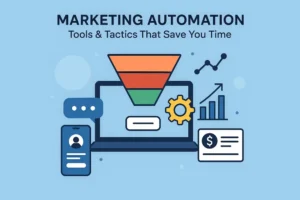In the age of the internet, our lives are intertwined with websites and digital platforms. But imagine trying to navigate these spaces with a visual or hearing impairment, or with limited motor skills. Sadly, the vast majority of websites today aren’t built with inclusivity in mind. So, let’s delve into the art of creating accessible websites.
Table of Contents
Toggle“The power of the Web is in its universality. Access by everyone regardless of disability is an essential aspect.” – Tim Berners-Lee, W3C Director and inventor of the World Wide Web.
Let's Build Your Dream Website

1. Why Web Accessibility Matters
Web accessibility isn’t merely a design nicety; it’s a necessity. For a sizable chunk of the global population, having accessible websites means the difference between participation and isolation. Inclusion guarantees everyone can reap the benefits of the web.
Moreover, from a business standpoint, ensuring your website is accessible can broaden your audience and can even improve your search engine rankings. Google loves websites that are user-friendly!
2. Basic Principles of Accessible Web Design
Color Choices: Consider color blindness. When designing, ensure there’s sufficient contrast between text and background. Tools like the Color Contrast Checker can be invaluable.
Alternative Text: Each visual element should have an “alt” text. It aids visually impaired users who utilize screen readers to interpret images.
Keyboard-Friendly: A site should be navigable using only a keyboard. It’s a boon for those who can’t use a mouse.
Avoid Flashy Graphics & Automatic Media Play: Flashing graphics can trigger seizures in some users. Also, videos or audios that play automatically can be disorientating for many.
3. Advancing Towards a More Inclusive Design
Complex, you say? Consider a hierarchical layout. Users, especially those with cognitive disabilities, find structured content simpler to comprehend. Now, for a short detour: ever tried navigating a website with your eyes closed? It provides a novel perspective.
Responsive Design: Websites need to adapt to various devices, especially for users who rely on screen magnifiers.
Captions & Transcripts: Ensure video content has accurate captions. Offering a transcript can be a thoughtful addition, aiding those who prefer reading over listening.
Consistent Navigation: Surprisingly, most sites exhibit inconsistent navigation. Predictability is a friend of accessibility.
4. Tools to Assist in Web Accessibility
A variety of online tools, some free, others paid, can help in ensuring web accessibility:
WAVE: A free tool by WebAIM, it evaluates web accessibility and pinpoints areas for improvement.
AXE: Available as a browser extension, it identifies and suggests solutions to accessibility issues.
5. Web Accessibility is Everyone’s Responsibility
True, creating an accessible website might require extra effort. Some might argue, it’s intricate. And yes, there will be an array of short sentences, some verbose expositions, and the occasional profound thought thrown in.
But recall the inclusivity we’re aiming for. The web is a colossal playground. Everyone deserves a shot at the slide.
6. Closing Thoughts
Embrace the burstiness and perplexity of web accessibility. Grapple with its nuances. Unravel its intricacies. All with a simple goal: creating an inclusive web experience.
At Kiwi Web Solutions, we pride ourselves on constructing websites that everyone can access, relish, and benefit from. Because in this vast digital expanse, no one should be left in the shadows.
7. Challenges & Triumphs of Accessible Web Design
Embarking on a journey of accessible web design is not devoid of challenges. Sometimes, designers face a conundrum: How to maintain a site’s aesthetic appeal while ensuring full accessibility? Other times, the obstacles are more technical, navigating the labyrinthine maze of coding to ensure compliance with standards.
Yet, every time a barrier is overcome, the payoff is immense. Every challenge surmounted amplifies the digital voice of someone who might have previously been silent. Each triumph illuminates a corner of the web that was once shrouded in inaccessibility.
8. Future of Web Accessibility
With advancing technology, the horizon of web accessibility is ever-expanding. Voice recognition software, for instance, promises to be a game-changer, especially for those with motor disabilities. Augmented and virtual reality tools are poised to offer immersive web experiences that cater to all users, no matter their physical or cognitive abilities.
The drumbeat of progress is unmistakable. The question isn’t whether web accessibility will be universal, but when.
9. Tips for Webmasters
For those at the helm of websites, remember:
Regular Audits: Schedule periodic accessibility audits. Websites evolve, and it’s easy to introduce non-compliant elements unknowingly.
User Feedback: Encourage feedback from users with disabilities. Their firsthand experience is invaluable in refining accessibility.
Stay Updated: Web accessibility standards and practices are dynamic. Regularly update your knowledge to stay compliant.

Get a Free Website Audit Today
10. The Last Word
In a world increasingly digitized, we have the power—and the responsibility—to build bridges, not walls. Accessibility, at its core, is about recognizing the diverse tapestry of human experience and ensuring that the World Wide Web truly is a web for the world.
We, at Kiwi Web Solutions, remain dedicated to weaving this inclusivity into the very fabric of the sites we build. Inclusion is not just a buzzword for us—it’s a mission.




